New York Colony
|
|
This Site:
|
Map of New York in the Revolutionary WarNew York Colony - Fear of Negro Insurrections - New York Riots of 1765 - The Fields of New York - The Eve of Revolution in New York - Capture of New York - Great New York Fire of 1776 - Evacuation of New York in 1783 New York in the Civil War - The New York Draft Riots (1862) New York, COLONY OF. The bay of New York and its great tributary from the north, with the island of Manhattan, upon which part of the city of Greater New York now stands, were discovered by HENRY HUDSON, in the early autumn of 1609. The Indians called the river Mahiccannick, or "River of the Mountains." The Dutch called it Mauritius, in compliment to Prince Maurice, and the English gave it the name of Hudson River, and sometimes North River, to distinguish it from the Delaware, known as South River. The country drained by the Hudson River, with the adjacent undefined territory, was claimed by the Dutch. The year after the discovery, a ship, with part of the crew of the Half Moon, was laden with cheap trinkets and other things suitable for traffic with the Indians, sailed from the Texel (1610), and entered the mouth of the Mauritius. The adventurers established a tradingpost at Manhattan, where they trafficked in peltries and furs brought by the Indians, from distant regions sometimes. Among the bold navigators who came to Manhattan at that time was Adrian Block, in command of the Tigress. He had gathered a cargo of skins, and was about to depart late in 1613, when fire consumed his ship and cargo. He and his crew built log cabins at the lower end of Manhattan, and there constructed a rude ship during the winter, which they called Onrust - " unrest " - and this was the beginning of the great commercial mart, the city of New York. In the spring of 1614 Block sailed through the dangerous strait at Hell Gate, passed through the East River and Long Island Sound, discovered the Housatonic, Connecticut, and Thames rivers, and that the long strip of land on the south was an island (Long Island) ; saw, and named Block Island, entered Narraganset Bay and the harbor of Boston, and, returning to Amsterdam, made such a favorable report of the country that commercial enterprise was greatly stimulated, and, in 1614, the States-General of Holland granted special privileges for traffic with the natives by Hollanders. A company was formed, and with a map of the Hudson River region, constructed, probably, under the supervision of Block, they sent deputies to The Hague - the seat of government - to obtain a charter. It was obtained on October 11, 1614, to continue four years. The territory included in this charter of privileges-between the parallels of lat. 40° and 45° N., as " lying between Virginia and New France " - was called NEW NETHERLAND. At the expiration of the charter, the privilege of a renewal was denied, for a more extended and important charter was under contemplation. In 1002 Dutch merchants in the India trade formed an association with a capital of $1,000,000, under the corporate title of the Dutch East India Company. Their trading privileges extended over all the Indian and Southern oceans between Africa and America. In 1607 they asked for a charter for a Dutch West India Company, to trade along the coast of Africa from the tropics to the Cape of Good Hope, and from Newfoundland to Cape Horn along the continent of America. It was not then granted, for political reasons, but after the discovery of New Netherland the decision was reconsidered, and on June 3, 1620, the States-General chartered the Dutch West India Company, making it not only a great commercial monopoly, but giving it almost regal powers to colonize, govern, and defend, not only the little domain on the Hudson, but the whole unoccupied Atlantic coast of America and the western coasts of Africa.
A DUTCH WEST INDIA COMPANY'S TRADING-POST.Meanwhile the Dutch had explored Delaware Bay and River, presumably as far as Trenton, and had endeavored to obtain a four years' charter of trading privileges in that region, but it was regarded as a part of the English province of Virginia. At the same time the traders on the Hudson River had been very enterprising. They built a fort on an island just below the site of Albany, enlarged their storehouse at Manhattan, went over the pine barrens from the Hudson into the Mohawk Valley, and became acquainted with the nations of the IROQUOIS CONFEDERACY, and made a treaty with them. The Plymouth Company complained that they were intruders on their domain. King James growled, and Captain Deriner gave them a word of warning. The Dutch West India Company was organized in 1622. Its chief objects were traffic and humbling Spain and Portugal, not colonization. But the attention of the company was soon called to the necessity of founding a permanent colony in New Netherland, in accordance with the English policy, which declared that the rights of eminent domain could only be secured by actual permanent occupation. King James reminded the States-General that Hollanders were unlawfully seated on English territory, but the Hollanders paid no more attention to his threats than to take measures for founding an agricultural colony. At that time Holland was the asylum for the oppressed for conscience' sake from all lands. There was a class of refugees there called Walloons, natives of the southern Belgic provinces, whose inhabitants, about forty years before, being chiefly Roman Catholics, had refused to join those of the northern provinces in a confederacy. The Protestants of these provinces (now Belgium) were made to feel the lash of Spanish persecution, and thousands of them fled to Holland. These were the Walloons, who spoke the French language. They were a hardy, industrious race, and introduced many of the useful arts into their adopted country. Some of them wished to emigrate to Virginia, but the terms of the London Company were not liberal, and they accepted proposals from the Dutch West India Company to emigrate to New Netherland. A ship of 260 tons burden, laden with thirty families (110 men, women, and children), mostly Walloons, with agricultural implements, livestock of every kind, and a sufficient quantity of household furniture, sailed from the Texel early in March, 1623, with Cornelius Jacobus May, of Hoorn, as commander, who was also to remain as first director, or governor, of the colony. They took the tedious southern route, and did not reach Manhattan until the beginning of May, where they found a French vessel at the mouth of the Hudson, whose commander had been trying to set up the arms of France on the shore, and to take possession of the country in the name of the French monarch. The yacht Mackerel had just come down the river. With two cannon taken from the little fort at the southern end of the island, the Frenchman was compelled to desist. His vessel was convoyed to sea, when it went round to the Delaware, and there her commander attempted the same kind of proclamation of sovereignty. He was treated by the Dutch settlers there as at Manhattan, when he sailed for France. This performance was the last attempt of the French to assert jurisdiction south of lat. 45° N., until a long time afterwards. These emigrants were soon scattered to different points to form settlements - some to Long Island, some to the Connecticut River, others to the present Ulster county, and others founded Albany, where the company had built Fort Orange. Four young couples, married on shipboard, went to the Delaware, and began a settlement on the east side of the river (now Gloucester), 4 miles below Philadelphia, where they built a small fortification, and called it Fort Nassau. Eight seamen, who went with them, remained and formed a part of the colony. The company, encouraged by successful trading, nurtured the colony. In 1626 they sent over Peter Minuit as governor, who bought Manhattan Island of the natives, containing, it was estimated, 22,000 acres. At its southern end he built a fort, calling it Fort Amsterdam, and the village that grew up near it was afterwards named NEW AMSTERDAM. The States-General constituted it a county of Holland. So it was that, within fifteen years after the discoveries of Hudson, the foundations of this great commonwealth were firmly laid by industrious and virtuous families, most of them voluntary exiles from their native lands, to avoid persecution on account of theological dogmas. These were followed by others, equally good and industrious. In 1629 the company gave to the settlers a charter of "privileges and exemptions," which encouraged the. emigration of thrifty farmers from the fatherland. As much land was offered to such emigrants as they could cultivate, with "free liberty of hunting and fowling," under the directions of the governor. They also offered to every person who should "discover any shore, bay, or other fit place for erecting fisheries or the making of salt-ponds," an absolute property in the same. As the rural population of Holland were not generally rich enough to avail themselves of these privileges, grants of extensive domains, with manorial privileges, were offered to wealthy persons who should induce a certain number of settlers to people and cultivate these lands. Under this arrangement some of the most valuable part of the lands of the company passed into the possession of a few persons, and an aristocratic element was introduced. The colony was flourishing when Governor Minuit returned to Amsterdam, in 1632, and was succeeded next year by Wouter Van Twiller, who had married a niece of Killian Van Rensselaer, a rich pearl merchant, and who became a patroon. Van Twiller was stupid, but shrewd, and the colony prospered in spite of him. At the end of four years he was succeeded by WILLIAM KIEFT, a spiteful, rapacious, and energetic man, whom De Vries numbered among great rascals. His administration was a stormy one. He exasperated the surrounding Indian tribes by his cruelties, and so disgusted the colonists by his conduct that, at their request, he was recalled, and sailed for Europe, with illgotten wealth, in the spring of 1647, and perished by ship-wreck on the shores of Wales. Peter Stuyvesant succeeded Kieft. He was a brave soldier, who had lost a leg in battle, and came to New Netherland from Curacoa, where he had been governor. He was then forty-four years of age, energetic, just, and so self-willed that Washington Irving called him "Peter the Head-strong." He conciliated the Indian tribes, and systematically administered the affairs of the colony. He came in collision with the Swedes on the Delaware and the English on the Connecticut River. During his administration he subdued the Swedes (1655), and annexed the territory to New Netherland. Finally serious political troubles overtook the colony. From the beginning of the settlement the English claimed New Netherland as a part of Virginia, resting their claim upon the discovery of Cabot. In 1622 the English minister at The Hague demanded the abandonment of the Dutch settlements on the Hudson. Five years afterwards Governor Bradford, of Plymouth, gave notice to Governor Minuit that the patent of New England covered the domain of New Netherland. In the spring of 1664 Charles II. granted to his brother James, Duke of York, all New Netherland, including the region of country between the Hudson and Delaware rivers; and in August the same year an English fleet appeared before New Amsterdam and demanded its surrender. Governor Stuyvesant resisted for a while, but was compelled to comply, and the whole territory claimed by the Dutch passed into the possession of the English on Sept. 8, 1664.
New York in 1679At the treaty of peace between England and Holland, the Dutch were allowed to retain the colony of Surinam, in Guiana, England retaining New York. Edmund Andros was appointed governor, and a formal surrender of the province occurred in October. In 1683 Thomas Dongan became governor, and, under instructions from the Duke of York, he called an assembly of representatives chosen by the people, and a charter of liberties was given to the colonists. This was the foundation of representative government in New York ; but the privileges promised were denied. When James was driven from the throne, and Nicholson, the lieutenant-governor, afraid of the people, fled, Jacob Leisler, a merchant of republican tendencies, administered the government for some time in the name of the new sovereigns, William and Mary. When Sloughter, the royal governor, came, the enemies of Leisler procured his execution by hanging (see LEISLER, JACOB) . During these political troubles, western New York, then inhabited by the Seneca Indians, was invaded by the French, under De Nonville, governor of Canada. Two years later (1689) the Five Nations retaliated by invading Canada. The retribution was terrible. More than 1,000 French settlers were slain, and the whole province was threatened with destruction. The French then attacked the English. A party of Canadians and Indians burned Schenectady in 1690, and murdered nearly all of the inhabitants. In 1691 the province of New York was redivided into ten counties-namely, New York, Westchester, Ulster, Albany, Dutchess, Orange, Richmond, Kings, Queens, and Suffolk. Cornwall county, in Maine, and Dukes county, in Massachusetts, forming a part of the domain of New York, were transferred to those colonies under its new charter.
New York Harbor in Colonial DaysThe French invaded the Mohawk country in 1693, but the greater part of them perished before they reached Canada. Count Frontenac, governor of Canada, prepared to attack the Five Nations with all his power, when the governor of New York (Earl of Bellomont) declared that the English would make common cause with the Iroquois Confederacy. The colony was largely involved in debt by military movements during Queen Anne's War, in which the English and French were engaged from 1702 to 1713. The vicinity of Lake Champlain afterwards became a theatre of hostile events. In 1731 the French built Fort Frederick at Crown Point, for a defense at the natural pass between the Hudson and St. Lawrence; and in 1745 a party of French and Indians invaded the upper valley of the Hudson and destroyed Saratoga. Finally, in 1754, the English and French began their final struggle for supremacy in America, in which the Indians bore a conspicuous part (see FRENCH AND INDIAN WAR). Meanwhile the colony had been the theatre of warm political strife between the adherents of royalty and democracy. The death of Leisler had created intense popular feeling against royal rule by deputies, and there was continual contention between the popular Assembly and the royal governor. There was a struggle for the freedom of the press, in which the people triumphed. A colonial convention was held at Albany in 1754, to devise a plan of union (see ALBANY), and during the French and Indian War many of its most stirring events occurred in the province of New York. That war ended by treaty in 1763, and not long afterwards began the struggle of the English-American colonies against the oppressions of Great Britain. New York took a leading part in that struggle, and in the war for independence that ensued.
On Jan. 26, 1775, Abraham Tenbroeck moved, in the New York Assembly, to take into consideration the proceedings of the first Continental Congress. He was ably seconded by Philip Schuyler and a greater portion of those who were of Dutch descent, as well as George Clinton. The motion was lost by a majority of one. Toryism was then rife in the Assembly. They refused to vote thanks to the New York delegates in the Congress, or to print the letters of the committee of correspondence. They expressed no favor for the American Association; and when, on February 23, it was moved to send delegates to the second Continental Congress, the motion was defeated by a vote of 9 to 17. The Assembly was false to its constituents, for a majority of the province was, in heart, with Massachusetts. After the Provincial Assembly had adjourned, never to meet again (April 3, 1775), a committee of sixty was appointed in the city of New York to enforce the regulations of the American Association. Warmly supported by the Sons of Liberty, they took the lead in political matters. By their recommendation the people in the several counties chose representatives for a Provincial Congress, which body first convened on May 22, 1775. The conservatism of New York disappeared when it was evident that the door of reconciliation had been closed by the King. On May 24, the convention referred the vote of the Continental Congress of the 15th, on the establishment of independent State governments, to a committee composed of John Morin Scott, Haring, Remsen, Lewis, Jay, Cuyler, and Broome. They reported in favor of the recommendation of the Congress. On the 31st, provision was made for the election of new deputies, with ample power to institute a government which should continue in force until a future peace with Great Britain. Early in June the Provincial Congress had to pass upon the subject of independence. Those who had hitherto hesitated, with a hope of conciliation, now fell into line with the radicals, and on the 11th the Provincial Congress, on motion of John Jay, called upon the free-holders and electors of the colony to confer on the deputies to be chosen full powers for administering government, framing a constitution, and deciding the important question of independence. The newly instructed Congress was to meet at White Plains on July 9 (1776). Meanwhile the Continental Congress, by the vote of eleven colonies, had adopted (July 2) a resolution for independence, and a declaration of the causes for the measure on July 4. The new Congress of New York assembled at White Plains on the 9th, with Nathaniel Woodhull as president; and on the afternoon of that day, when thirty-five delegates were present, John Jay made a report in favor of independence. The convention approved it by a unanimous vote, and directed the Declaration adopted at Philadelphia to be published with beat of drum at White Plains, and in every district of the colony. They empowered their delegates in Congress to join heartily with the others in moving on the car of revolution, and called themselves the representatives of the State of New York. So the vote of the thirteen colonies on the subject of independence was made complete, and New York never swerved from the path of patriotic duty then entered. |
|
|
||
|
|
Site Copyright 2003-2018 Son of the South. For Questions or comments about this collection, contact: paul@sonofthesouth.net |
|
|
Are you Scared and Confused? Read My Snake Story, a story of hope and encouragement, to help you face your fears. |
||
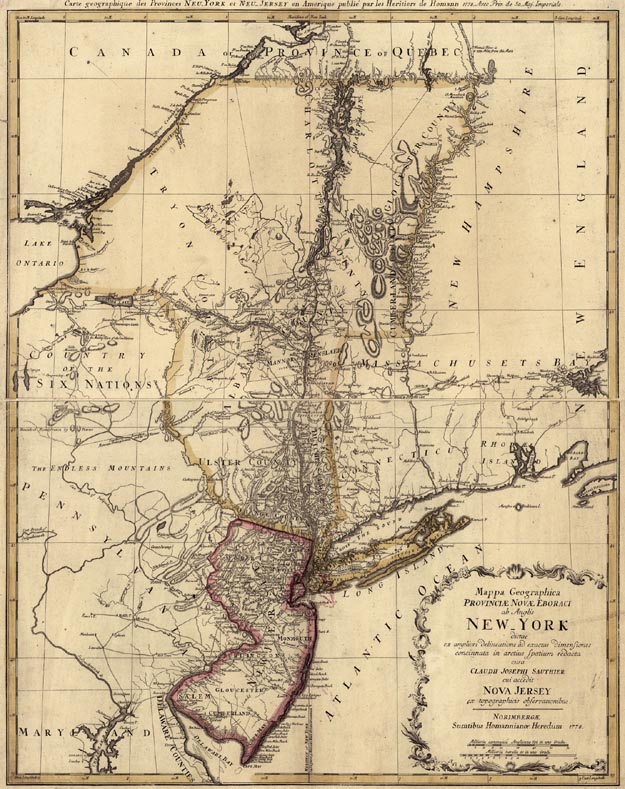
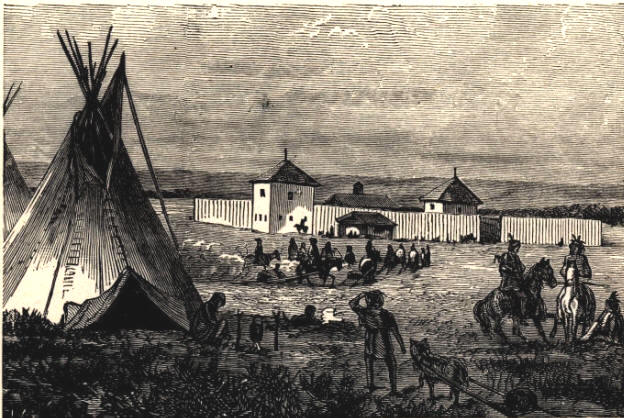
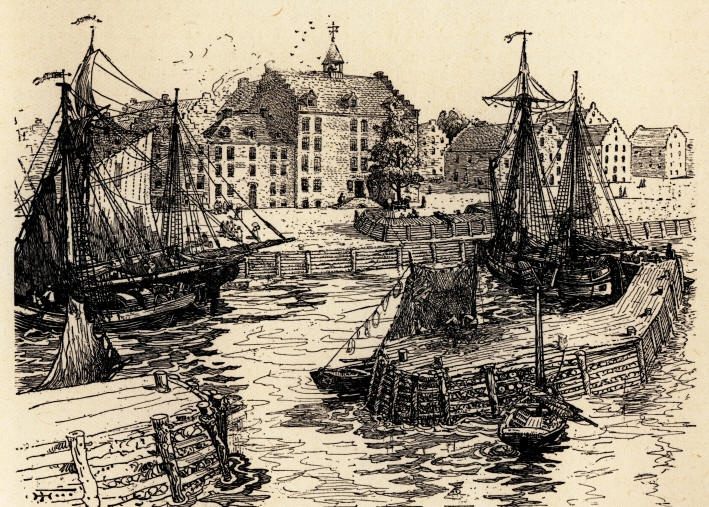
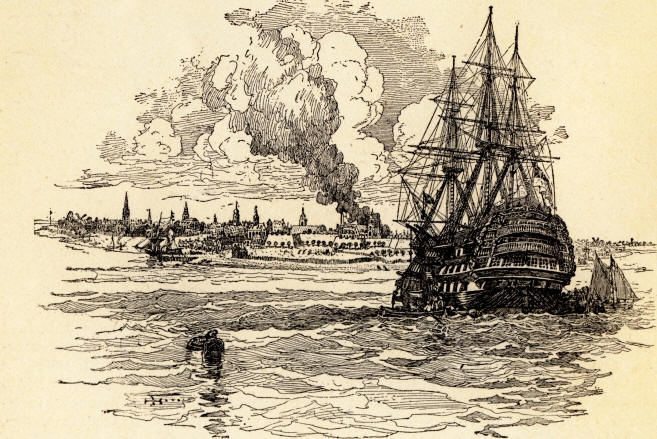
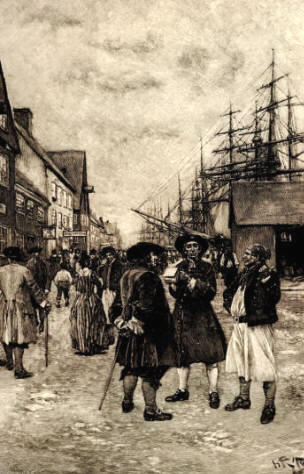 The
Provincial Assembly of New York steadily refused compliance with the
demands of the mutiny and quarantine acts, and early in 1767
Parliament passed an act " prohibiting the governor, council, and
Assembly of New York passing any legislative act for any purpose
whatsoever." Partial concessions were made; but a new Assembly,
convened in February, 1768, composed of less pliable materials,
would not recede from its position of independence, though the
province was made to feel the full weight of the royal displeasure.
In May, 1769, the Assembly yielded, and made an appropriation for
the support of the troops. In December the Assembly, under a pretext
of enacting laws for the regulation of trade with the Indians, and
with the concurrence of the lieutenant - governor (Colden), invited
each province to elect representatives to a body which should
exercise legislative power for them all. This was a long stride
towards the American Union.
The
Provincial Assembly of New York steadily refused compliance with the
demands of the mutiny and quarantine acts, and early in 1767
Parliament passed an act " prohibiting the governor, council, and
Assembly of New York passing any legislative act for any purpose
whatsoever." Partial concessions were made; but a new Assembly,
convened in February, 1768, composed of less pliable materials,
would not recede from its position of independence, though the
province was made to feel the full weight of the royal displeasure.
In May, 1769, the Assembly yielded, and made an appropriation for
the support of the troops. In December the Assembly, under a pretext
of enacting laws for the regulation of trade with the Indians, and
with the concurrence of the lieutenant - governor (Colden), invited
each province to elect representatives to a body which should
exercise legislative power for them all. This was a long stride
towards the American Union.